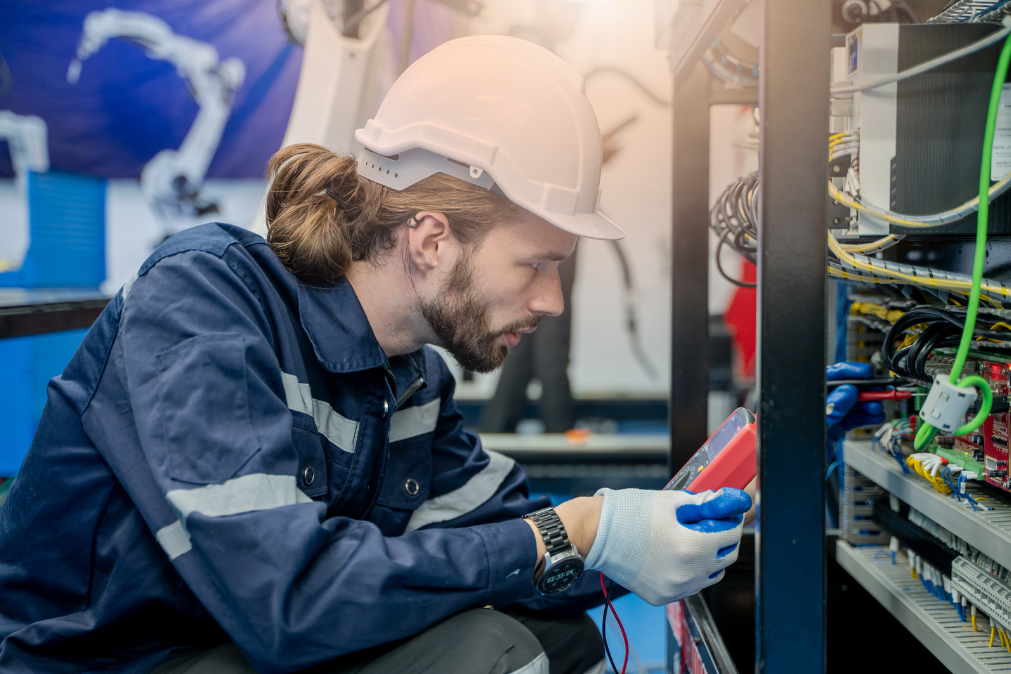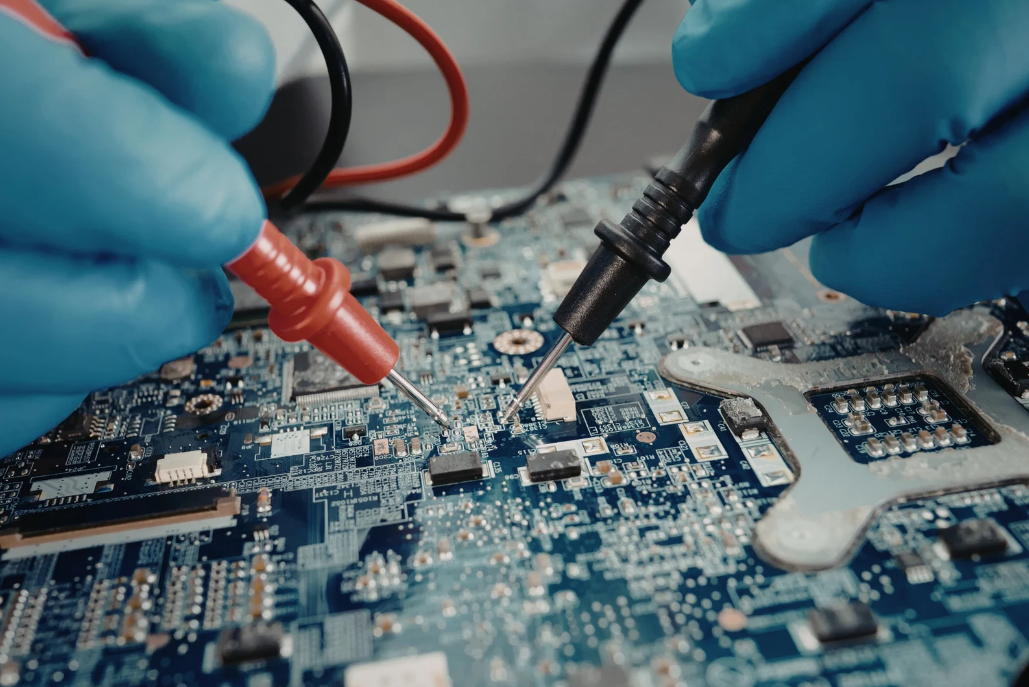Basic Principles of Piezoelectricity
Piezoelectricity is a unique property of certain materials that allows them to generate an electric charge in response to mechanical stress. This effect can work both ways: applying an electric field can cause the material to change shape. This dual capability makes piezoelectric materials incredibly useful in various applications.

Materials Used in Piezo Tubes
Piezo tubes are typically made from ferroelectric materials, which can be either soft or hard. These materials are available in different shapes like spheres, disks, rods, and tubes. The choice of material and shape depends on the specific application requirements. For instance, some applications may need a monolithic piezoceramic actuator with minimal geometric tolerances.
Manufacturing Process of Piezo Tubes
The manufacturing process of piezo tubes involves several steps:
- Selection of raw materials
- Shaping the materials into the desired form
- Sintering the shaped materials at high temperatures
- Poling the materials to align their electric dipoles
Each step is crucial to ensure the final product meets the required specifications. The process is designed to produce piezo tubes that can operate at high voltages, sometimes up to 1000V, and exhibit minimal axial and diameter contraction.
The versatility and precision of piezo tubes make them indispensable in modern technology, from aerospace to medical devices.
Applications of Piezo Tubes in Aerospace Technology
Piezo tubes have become essential in the aerospace industry, offering numerous benefits for various applications. Their ability to convert mechanical stress into electrical signals makes them invaluable for enhancing aircraft performance, vibration control systems, and aerospace instrumentation.
Enhancing Aircraft Performance
Piezo tubes play a crucial role in improving aircraft performance. They are used in pressure measurements, vibration monitoring, and flutter analysis of aircraft components. These applications help in maintaining the stability and efficiency of the aircraft, ensuring a safer and smoother flight experience.
Vibration Control Systems
In aerospace technology, vibration control is vital for the longevity and reliability of aircraft. Piezo tubes are used in vibration control systems to detect and mitigate unwanted vibrations. This not only enhances the comfort of passengers but also protects sensitive equipment from potential damage.
Aerospace Instrumentation
Piezo tubes are integral to various aerospace instruments. They are used in microprocessors for satellites to determine position and stabilize the satellite. Additionally, they are employed in micro-thrusters, which create controlled forces by emitting gas, aiding in precise maneuvering of spacecraft.
The versatility of piezo tubes in aerospace technology underscores their importance in modern aviation and space exploration.
Role of Piezo Tubes in Medical Devices
Piezo tubes have become essential in the medical field due to their precision and reliability. These tiny components are used in various medical devices, enhancing their performance and functionality.
Precision in Medical Imaging
Piezo tubes play a crucial role in medical imaging, particularly in ultrasound devices. They generate and receive sound waves, allowing doctors to visualize internal structures of the body with high accuracy. This precision is vital for accurate diagnosis and treatment planning.
Drug Delivery Systems
In drug delivery systems, piezo tubes ensure precise control over the dosage and timing of medication release. This is especially important for treatments requiring exact dosages, such as insulin delivery for diabetes patients. The ability to control drug delivery with such precision improves patient outcomes and reduces side effects.
Patient Monitoring Equipment
Piezo tubes are also used in patient monitoring equipment, where they help in measuring vital signs like heart rate and blood pressure. Their fast response and high sensitivity make them ideal for continuous monitoring, ensuring that any changes in a patient’s condition are detected promptly.
The versatility of piezo tubes in medical devices highlights their importance in modern healthcare. From imaging to drug delivery and patient monitoring, these components are integral to improving patient care and outcomes.
Piezo Tubes in Industrial Automation
Robotics and Motion Control
Piezo tubes are essential in robotics and motion control due to their fast response and high precision. They help in achieving smooth and accurate movements in robotic arms and other automated systems. These tubes can generate targeted pressure pulses, making them ideal for microdosing applications in industrial settings.
Quality Control and Inspection
In quality control, piezo tubes are used for precise measurements and inspections. Their high sensitivity and fast response times ensure that even the smallest defects are detected. This makes them invaluable in maintaining high standards in manufacturing processes.
Energy Harvesting in Industrial Settings
Piezo tubes can also be used for energy harvesting in industrial environments. They convert mechanical energy from vibrations and movements into electrical energy, providing a sustainable power source for various industrial applications. This not only helps in reducing energy costs but also promotes sustainable manufacturing practices.
Piezo tubes are revolutionizing industrial automation by providing high precision, fast response times, and sustainable energy solutions.
Advancements in Piezo Tube Technology
Innovations in Sensitivity and Durability
Recent advancements in piezo tube technology have led to significant improvements in both sensitivity and durability. Modern piezo tubes now offer faster response times and higher bandwidth, making them invaluable in high-tech applications like flow measurement and distance gauging. These innovations ensure that piezo tubes can withstand more demanding environments while maintaining their performance.
Integration with Modern Electronics
The integration of piezo tubes with modern electronics has opened up new possibilities. Flexible printed circuits are now being adhered to piezo components, allowing for easier application integration. This has been particularly beneficial in fields such as semiconductor testing and aerospace technology, where precision and reliability are paramount.
Future Prospects and Research Directions
The future of piezo tube technology looks promising, with ongoing research focusing on enhancing their capabilities. Researchers are exploring new materials and manufacturing processes to further improve the performance and scalability of piezo tubes. This continuous innovation is expected to lead to even more advanced applications in various industries.
The rise of piezoelectric technology is directly related to a set of inherent advantages. There is no need for an external force. It is easy to handle and use as it has small dimensions. High-frequency response means that the parameters change very rapidly. The high modulus of elasticity of many piezoelectric materials is comparable to that of many metals and goes up to 10^6 N/m^2.
Environmental and Energy Applications of Piezo Tubes
Piezo tubes are making waves in renewable energy. They can convert mechanical energy from sources like wind and waves into electricity. This technology is especially useful in remote areas where traditional power sources are hard to access. By harnessing solar and water-driven energy through a combination of advanced materials, piezo tubes can help degrade pollutants and generate clean energy.
Piezo tubes are also used in environmental monitoring. They can detect changes in pressure, temperature, and other environmental factors. This makes them ideal for tracking climate change and monitoring natural disasters. For example, piezoelectric sensors can be placed in oceans to monitor wave activity and predict tsunamis.
In manufacturing, piezo tubes contribute to sustainability. They can be used to create more efficient machines that consume less energy. Additionally, they help in recycling processes by breaking down materials more effectively. This not only saves energy but also reduces waste, making manufacturing more eco-friendly.
Piezo tubes are not just a technological marvel; they are a step towards a more sustainable and environmentally friendly future.
Challenges and Solutions in Piezo Tube Applications
Overcoming Material Limitations
Piezo tubes face significant material limitations that can hinder their performance. One major issue is the deformation and pore formation during the manufacturing process. Researchers are exploring various material doping techniques to enhance the properties of piezo tubes and make them more reliable.
Addressing Cost and Scalability
The high cost of piezo tubes is a barrier to widespread adoption. To address this, manufacturers are looking into more cost-effective production methods. Additionally, scaling up production while maintaining quality is a challenge that needs innovative solutions.
Ensuring Long-Term Reliability
Ensuring the long-term reliability of piezo tubes is crucial for their use in critical applications. This involves rigorous testing and the development of more durable materials. Fast response and high bandwidth are essential characteristics that need to be maintained over time.
The advancements in polymer nanofiber-based piezoelectric materials offer promising solutions to some of these challenges, stimulating further research in the field.
Summary
Piezo tubes are truly amazing in how they help us in so many ways. They can change pressure, force, and vibrations into electric signals, which is super useful in lots of fields. From making sure airplanes are safe to helping doctors with medical tools, piezo tubes are everywhere. They are small but mighty, and as technology keeps getting better, we will find even more cool ways to use them. So, next time you see a high-tech gadget, remember that a tiny piezo tube might be making it work!
Frequently Asked Questions
What are piezo tubes?
Piezo tubes are special devices that turn mechanical energy into electrical energy and vice versa. They are used in many high-tech applications to measure things like pressure, force, and vibration.
How do piezo tubes work?
Piezo tubes work on the principle of piezoelectricity. When they are squeezed or stretched, they produce an electric charge. This charge can be used to measure physical changes.
Where are piezo tubes used in aerospace technology?
In aerospace, piezo tubes help improve aircraft performance, control vibrations, and are used in various instruments to ensure safety and efficiency.
Why are piezo tubes important in medical devices?
Piezo tubes are crucial in medical devices because they provide precise measurements. They are used in imaging machines, drug delivery systems, and patient monitoring equipment.
Can piezo tubes be used in robots?
Yes, piezo tubes are used in robots for precise motion control. They help robots move accurately and perform tasks with high precision.
What are the challenges in using piezo tubes?
Some challenges include material limitations, cost, scalability, and ensuring they work reliably over a long time.



